

The name "Ripper Squad" was applied to groups of investigators as the investigation became larger and larger and the number of police officers involved increased. For example, the Prostitute Murder Squad, formed in 1978, was dubbed the Ripper Squad by the Press. The "Ripper Squad" pictured here, are the top investigators and those responsible for the actual investigations of the murders. From left to right: Detective Superintendent (Bradford Area) Dick Holland, Detective Chief Superintendent Peter Gilrain (Bradford Area), Detective Chief Superintendent Jim Hobson (Leeds Area), Assistant Chief Constable George Oldfield (West Yorkshire), and Detective Superintendent Alf Findlay (Leeds). Not pictured here is Detective Chief Superintendent Jack Ridgeway who was in charge of the investigation of the Manchester murders (see below).

The Ripper Super Squad in November 1980: (seated) ACC Jim Hobson (West Yorkshire), (standing, left to right: ACC David Gerty (West Midlands), Commander Ronald Harvey, Deputy CC Leslie Emmant (Thames Valley), Stuart Kind (Home Office), ACC Andrew Sloan (National Co-ordinator). The Super Squad came into existence after the murder of Jacqueline Hill, a shake-up that many thought was a long time coming. George Oldfield, who had been the man in charge of the Yorkshire Ripper murders, was no longer involved in the case.
 RONALD GREGORY
RONALD GREGORY
Ronald Gregory was Chief Constable of West Yorkshire from 1969 until his retirement in 1983.
After the murder of Jayne MacDonald in June 1977, Gregory appointed Assistant Chief Constable George Oldfield as the man in overall control of the Yorkshire Ripper investigation. George Oldfield, who had suffered a heart attack, been off work, and then returned, was removed from the case in 1980 by Chief Constable Gregory and Jim Hobson was appointed as the man in charge of the case. Hobson then selected his own team that included outside police officers (see the above Ripper Super Squad).
When Ronald Gregory sold his memoirs to the Mail On Sunday in 1983, just after his retirement, a storm of protest arose from the press, police, politicians, surviving victims, victims' families, and even from Sonia Sutcliffe. Gregory was even accused in the Police Review of being disloyal and a hypocrite over selling his memoirs, which mainly dealt with the Yorkshire Ripper investigation, for £40,000.
After the first installment appeared, the West Yorkshire Police Authority decided to release the internal police report by Colin Sampson. Gregory replied to his critics in this statement to The Mail On Sunday: "Over the years West Yorkshire police have been the subject of criticism based upon speculation, misinformation, and conjecture, without the full facts being known. I had always intended, once I got the opportunity, to set the record straight, something I was unable to do during my police service."
"Though I realised, along with everyone else, that there were factors against early publication of my memoirs, I believe these were outweighed by the need to inform the public, without further delay, of what really happened during the Yorkshire Ripper inquiry, in particular the pressures and difficulties which existed over the years upon myself and my officers. My main purpose in writing these articles is to refute the criticism of dedicated police officers."
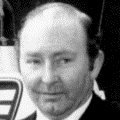 DENNIS HOBAN
DENNIS HOBAN
Detective Chief Superintendent Dennis Hoban was involved in the investigation of the Wilma McCann murder and the Emily Jackson murder. Hoban quickly linked the two murders, and the post-mortem report from the pathologist, Professor David Gee (see below), left him in no doubt.
In mid-1976 Hoban was promoted to Deputy Assistant Chief Constable for Crime and was replaced by James Hobson as head of Leeds C.I.D. Hoban was a diabetic and suffered from asthma and died suddenly in 1978.
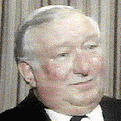 GEORGE OLDFIELD
GEORGE OLDFIELD
The most well-known man of the whole investigation was Assistant Chief Constable George Oldfield.
In June 1977, after the murder by the Yorkshire Ripper of Jayne MacDonald "an innocent victim" and the story became national news, Chief Constable Ronald Gregory appointed Oldfield in overall charge of the Yorkshire Ripper Investigation.
George Oldfield's personal obsession with the case was further compounded by the mocking tape which was released to the public in June 1979. He viewed it as a "personal challenge" and a "him against me" case. In August 1979, Oldfield suffered a heart attack and had to be ordered to take sick leave at the height of the ill-fated Ripper tape investigation. Oldfield was finally totally removed from the case in 1980 and replaced by James Hobson.
George Oldfield had led the M62 coach bomb investigation in which Judith Ward spent 18 years in prison before being released after it was revealed that evidence had been suppressed which would have greatly assisted her defence.
George Oldfield retired from the West Yorkshire police in August 1983 and died in 1985.
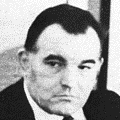 RICHARD HOLLAND
RICHARD HOLLAND
Detective Superintendent Dick Holland was given temporary command of the Ripper Investigation when George Oldfield suffered a heart attack in mid-1979 and was ordered to rest.
In 1976, Dick Holland had been involved in the investigation of the Lesley Molseed murder in which Stefan Kiszko was convicted and sentenced to life imprisonment. Part of the prosecution case was a confession (after intense pressure by the police), which was retracted by Kiszko. After sixteen years in prison he was finally released when it was proved that he was incapable of producing the semen which had been deposited on her clothing. This evidence had been available at the time of the trial but was never passed on to the defence attorneys.
Dick Holland retired from the West Yorkshire police in 1983. He died at age 74 on February 17 2007.
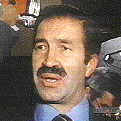 JAMES HOBSON
JAMES HOBSON
Detective Chief Superintendent James Hobson's first initiation into the Yorkshire Ripper case came in August 1975, although he didn't know it at the time. The investigation into the attack on Tracy Browne was Hobson's responsibility. But in the five years that followed no attempt had ever been made to link this attack to the Yorkshire Ripper case. So the best description and photofit of the Yorkshire Ripper was never widely circulated, as the attack was considered a "local". Only after a review of the police investigation was the case linked to Peter Sutcliffe, who finally admitted responsibility for the attack in 1992.
When Irene Richardson's body was found in February 1977 Hobson took charge of the investigation. Hobson had taken over as head of Leeds C.I.D. when Dennis Hoban had been promoted seven months earlier.
Later on he was in charge of the investigation into the death of Marguerite Walls, but concluded she probably was not a Yorkshire Ripper victim. While there were definite Ripper-like aspects to the murder, the strangulation with a ligature was an unusual aspect for a Ripper murder.After the murder of Jacqueline Hill, in what many thought was long overdue, George Oldfield was relieved of overall command of the case, and that task was handed to Detective Chief Superintendent James Hobson, who was also given the acting rank of Assistant Chief Constable. See the above Ripper Super Squad for his selection of officers.
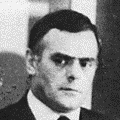 JACK RIDGEWAY
JACK RIDGEWAY
Detective Chief Superintendent Jack Ridgeway, was Head of the Manchester CID during the Ripper inquiry and dealt with two of the Yorkshire Ripper murders, Jean Jordan and Vera Millward.
The best clue as to the identity of the Yorkshire Ripper was the £5 note found in the handbag of Jean Jordan in October 1977. Delays in immediately trying to trace other notes from the same batch, by starting the inquiry too late and not immediately informing the public about it, caused a lost opportunity to reduce the number of people who could have received the note. During the hunt to find the owner of the £5 note, the police interviewed Sutcliffe, but his alibis for the two nights in question, the night of the murder and the night of the return visit to the body, were able to satisfy the interviewing officers.
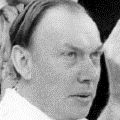 DAVID GEE
DAVID GEE
Professor David Gee, Head of the Department of Forensic Medicine at Leeds University, was the pathologist who carried out the post-mortem examinations on all the Yorkshire Ripper murder victims committed in West Yorkshire.
Professor Gee died in June 2001 at age 69.
(NOTE: Major source material for the above: Cross, Yallop, Mail On Sunday. Photos: Beattie, Bilton, Cross, Great Crimes And Trials Of The Twentieth Century (TV), Yallop. )